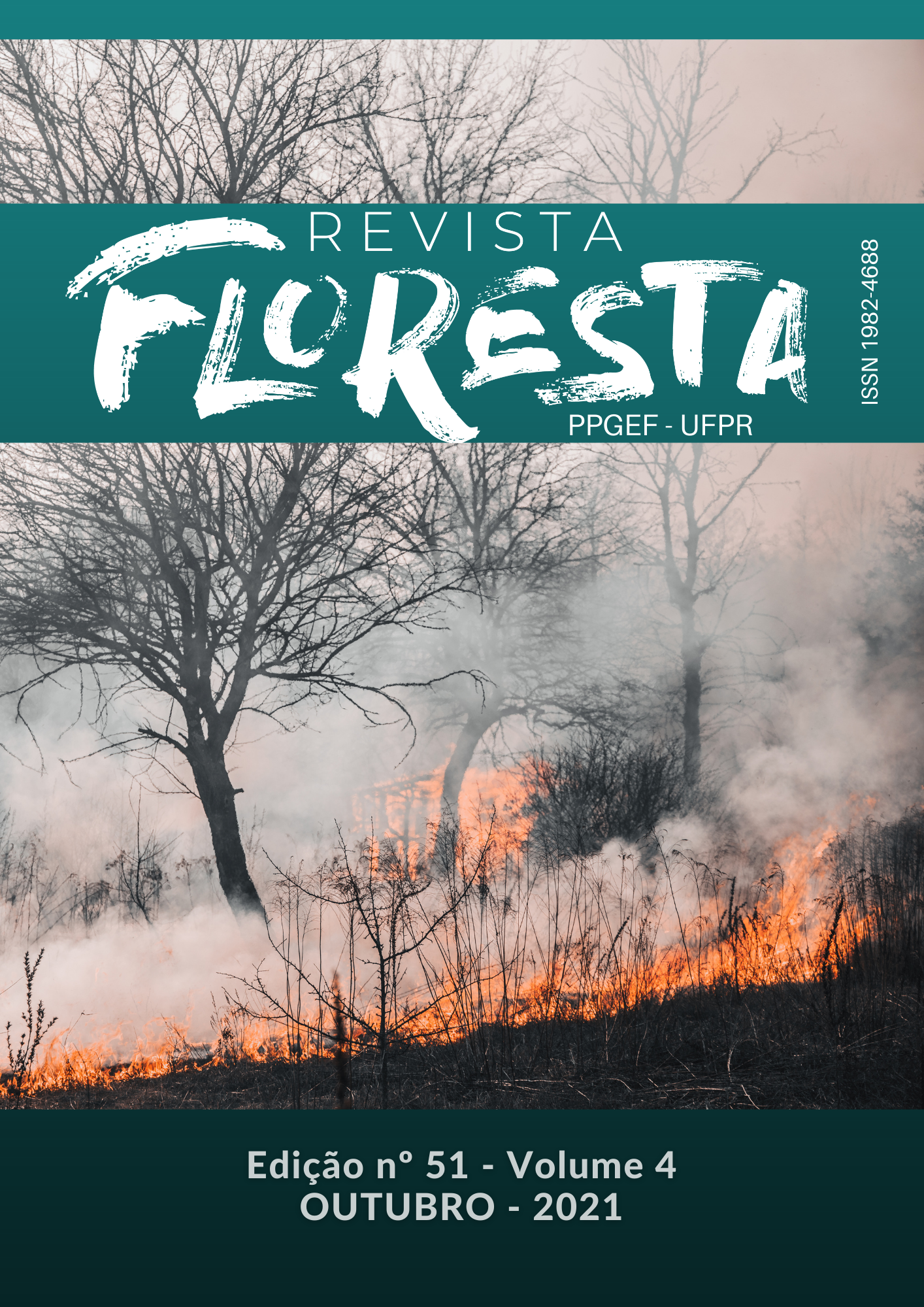CHEMICAL CHARACTERIZATION OF BARK COMPOUNDS FROM CAATINGA SPECIES
DOI:
https://doi.org/10.5380/rf.v51i4.73967Palavras-chave:
chemical composition, non-timber forest products, Near Infrared Spectroscopy (NIRS), soluble compounds, natural productsResumo
This study aimed to chemically characterize the bark extracts from three tree species: Anacardium occidentale L., Ziziphus joazeiro Mart. and Mimosa caesalpiniaefolia Benth., in addition to obtaining the soluble extract content in water, alcohol and hexane from the bark of these species. The bark was collected from branches of the three species and subsequently pre-dried and milled. The extract content was then determined using the Sohxlet method aiming to quantify the total extractives in the samples, and determine the extract content soluble in water, ethyl alcohol and hexane. The extracts were further analyzed by Near Infrared Spectroscopy (NIRS) analysis to determine their chemical composition. The extract contents in the three species behaved in a similar way, with hexane being the solvent which extracted more compounds and juazeiro the species that displayed the highest total extract content. With the chemical characterization of the extracts, it was possible to identify the presence of functional groups characteristic of carbohydrates and proteins in the aqueous extracts; the presence of characteristic hydroxyl group, for example in alcohols, aldehydes, ketones and ethers in the ethanolic extracts; and the presence of fatty acids and aromatic compounds (essential oils) in hexanolic extracts. The essential oils were the compounds which presented larger quantities, and can be exploited by the pharmaco-chemical industry.
Downloads
Publicado
Como Citar
Edição
Seção
Licença
Direitos Autorais para artigos publicados nesta revista são do autor, com direitos de primeira publicação para a revista. Em virtude da aparecerem nesta revista de acesso público, os artigos são de uso gratuito, com atribuições próprias, em aplicações educacionais e não-comerciais.A revista, seguindo a recomendações do movimento Acesso Aberto, proporciona acesso publico a todo o seu conteudo, seguindo o principio de que tornar gratuito o acesso a pesquisas gera um maior intrcambio global de conhecimento.
Conteúdos do periódico licenciados sob uma CC BY-NC-SA 4.0



